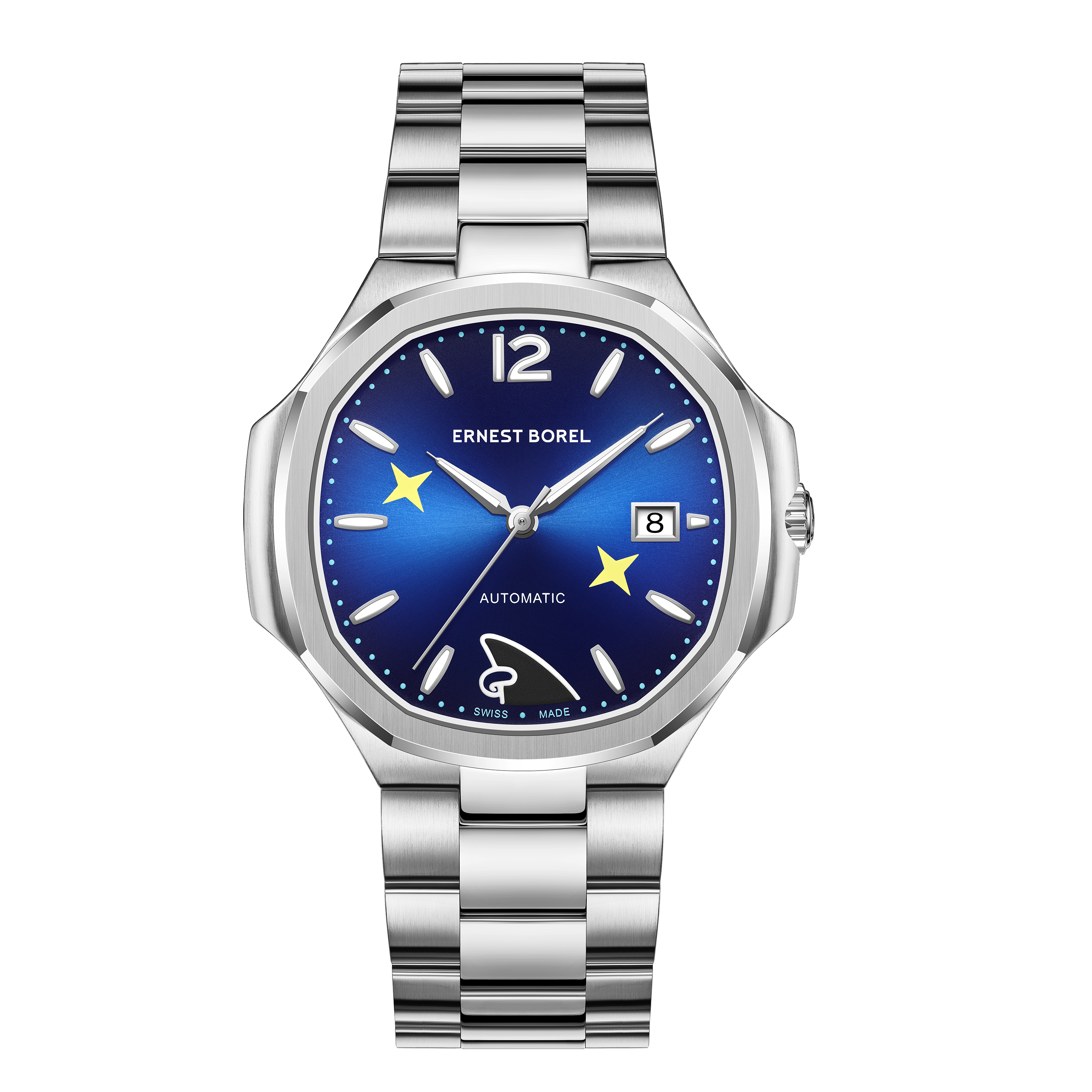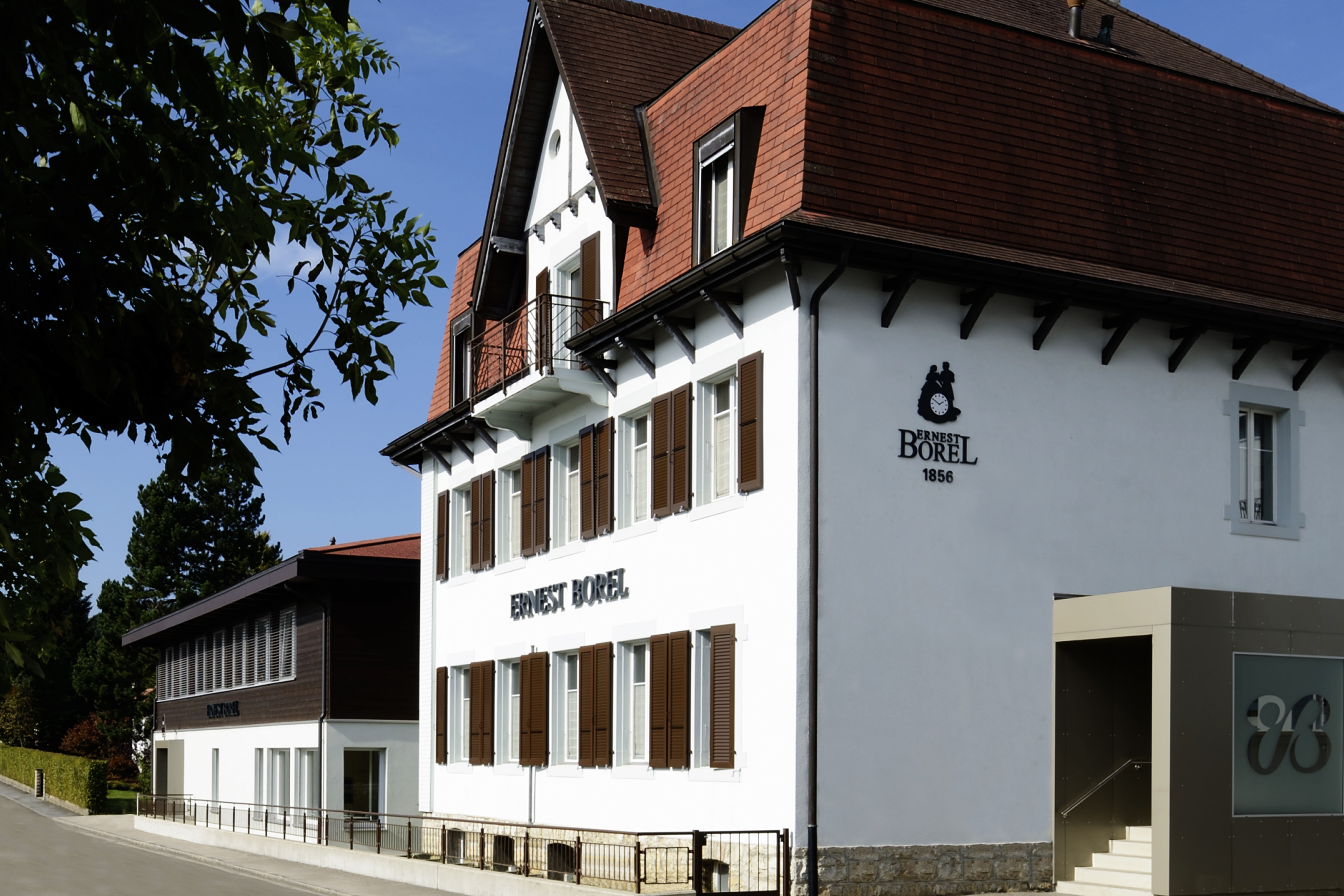Movements
Mechanical (Automatic and Manual-winding)
A mechanical watch comprises of the following parts: (1) power mechanism, i.e. mainspring and winding mechanism; (2) gear train; (3) speed regulator, i.e. escapement and balance wheel component; (4) hands and timing mechanism.Mechanical watches include manual and automatic winding types. The spring provides power for mechanical watches. For manual winding mechanical watches, the spring is tightened by manually turning the watch crown to drive the winding mechanism; for automatic winding mechanical watches, the spring is tightened by the natural swinging of the wrist to drive the winding mechanism.
Quartz
A quartz watch can be analog, digital or mixed type. It realizes timekeeping by battery power and quartz oscillation. For analog type quartz watches, the battery power drives the quartz to oscillate, and IC board controls step motor to drive the gear train and turn the hands. For digital quartz watches, the time is displayed by a LCD.
Certifications
COSC-certified
A COSC-certified watch is a chronometer that has passed the official Swiss certification for accuracy, guaranteeing precise timekeeping. These watches are highly esteemed in the watchmaking industry and are often linked to luxury and precision. COSC stands for Contrôle Officiel Suisse des Chronomètres, the official Swiss Chronometer Testing Institute. It is an independent body responsible for certifying Swiss made watches that adhere to strict accuracy standards. When a watch is described as COSC-certified, it indicates that the timepiece has undergone and passed rigorous accuracy tests, meeting the high-quality benchmarks required to be recognized as a chronometer.
Chronometer
It signifies that the watch has met the required standards for accuracy. However, Not all chronometers are COSC certified. It's important to note that a watch not being COSC certified doesn't necessarily mean it doesn't meet chronometer standards for accuracy. It simply means that it hasn't undergone official testing and certification by COSC. For a Swiss Made watch to bear the term "Chronometer" on the dial or case, it must be certified by COSC.
Complications
Chronograph
It functions as a stopwatch in addition to showing the regular time, that adds both functionality and mechanical complexity to a timepiece. It allows you to measure elapsed time, such as seconds, minutes, or hours, using extra buttons and hands on the watch.
Dual-time
Allows the wearer to track two different time zones simultaneously, making it especially useful for travelers or individuals who need to keep track of time in multiple locations. Typically, a dual-time watch displays the local time of the wearer’s current location and the time of a second location, often shown on a separate subdial or with a smaller hand on the same dial. This practical feature is ideal for those who frequently travel or need to coordinate with others across different time zones.
GMT (Greenwhich Mean Time)
GMT is the abbreviation of Greenwich Mean Time, also known as Universal Time (UT). Greenwich is where the UK observatory situates, which is the starting point of longitude in the world. Designed to show two time zones, with a 24-hour hand indicating Greenwich Mean Time (GMT) or another fixed time zone. It’s especially useful for travelers or professionals needing to reference global time, such as pilots.
Grande Complication
It is a complicated watch with at least perpetual calendar, minute repeater and chronograph (double split seconds) functions or even tourbillon.
Jumping Hours (or single-eyed)
The hour hand of the watch is replaced by a dial with numbers 1-12. The dial moves forward by one scale every hour, i.e. the number is changed accordingly every hour. The dial is designed with a small opening to show the number of hour.
Minute Repeater
It is a sophisticated mechanism that can chime the time for you without needing to look at the dial, involving tiny hammers and gongs to produce the chimes, along with a system that determines the time and triggers the correct sequence of sounds. When you press a button or slide a lever, the watch will chime to tell you the time. The chimes typically follow the pattern of hours, quarter hours and minutes. Due to its complexity and the precision required, it is classified as one of the most advanced and prestigious complications in horology.
Moon Phase
A moon phase watch works by rotating the moon disc on the movement to show moon activities (new moon, last quarter and full moon) through the half-round window on the dial. A correct lunation display is 29 days, 12 hours, 44 minutes and 3 seconds. The moon disc is designed with two opposite moons, with 59 teeth on the circumference and will rotate by 1 cycle every 59 days, or 2 lunar months.
Tourbillon
It is a mechanical feature designed to improve a watch's accuracy by counteracting the effects of gravity on the escapement (the mechanism that controls the release of energy from the mainspring). In traditional watches, the escapement is fixed in place, which can cause slight timekeeping variations due to gravity, especially when the watch is in certain positions. A tourbillon solves this by placing the escapement and balance wheel in a rotating cage that constantly turns, helping to average out these gravitational effects and improve the watch's overall accuracy.
Features
Water Resistance
The watch is waterproof, with the case, crown, and crystal designed to maintain waterproof and dustproof qualities at a specified depth. This feature requires regular checking to ensure continued performance.
Screw-Down Crown
A type of crown that screws into the case, creating a secure and water-resistant seal. It is commonly found in dive watches to improve water resistance.
Antimagnetic Watch
This watch is resistant to magnetic fields, as its balance spring is made from a non-magnetic nickel alloy, preventing accuracy issues caused by magnetism.
Multifunction Watch
A watch with additional functions beyond basic timekeeping, such as a chronograph, second time zone, alarm, perpetual calendar, minute repeater, and more.
Musical Watch
A mechanical watch that can produce music at specified intervals. It typically uses a disk or drum-type movement to generate sound.
Diver's Watch
Specifically designed for deep-sea diving, these watches typically feature a screw-down crown and are water-resistant to 20ATM (allowing diving up to 200 meters deep).
Watch Finishing and Decoration
Côtes de Genève (also known as Geneva Stripes)
This is a decorative finishing technique applied to the movement components of a watch, typically found in high-end mechanical timepieces. It involves carving parallel wave-like patterns on visible parts of the movement, primarily for aesthetic purposes. However, it also serves a practical function by reducing friction and enhancing the durability and longevity of the movement components.
Geneva Seal
This is a quality certification and decorative marking that signifies the watch has been manufactured to strict standards in Geneva, Switzerland. The seal ensures high-quality craftsmanship and movement finishing, and watches that meet these criteria are awarded the Geneva Seal, which is part of the watch's prestige. The Geneva Seal system, adopted legally on December 6, 1886, and revised in 1975 and 1994, consists of 12 rules that define the strict standards for Swiss watchmaking. Watches are voluntarily inspected and, if they meet these criteria, are marked with the "eagle and key" symbol on the movement, signifying the Geneva Seal.
IP Rose Gold/ Gold
IP (Ion Plating) is an advanced coating technique where ions of gold or rose gold are bonded to the metal surface, creating a durable, scratch-resistant finish with a rich, luxurious color. This method is often used as an affordable and functional alternative to solid gold, offering both aesthetic appeal and enhanced durability.
PVD Black
PVD (Physical Vapor Deposition) is a coating technique where a thin layer of material (often black) is deposited onto the watch surface. It offers a durable, scratch-resistant finish that also provides a matte or glossy appearance, depending on the application. PVD is often used for a sleek, modern look.
Rhodium Plating
This surface finishing technique is applied to watches to protect the metal, enhance its appearance, and increase durability, often used on parts like the case or movement to create a shiny, corrosion-resistant finish. Rhodium is a silvery-white noble metal known for its expense and complex plating process, which requires high technical precision. Rhodium plating offers a hard, abrasion-resistant, and bright surface, significantly improving corrosion resistance and chemical stability, thus enhancing the reliability and service life of the product.




































